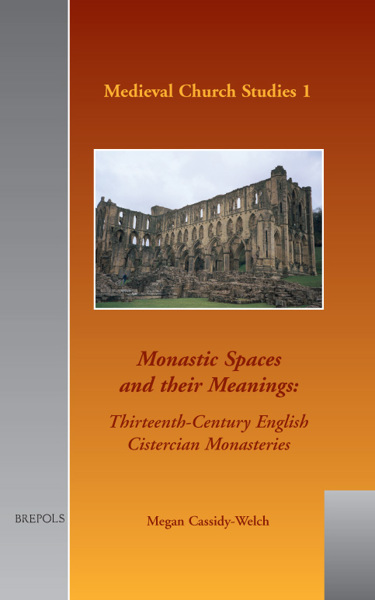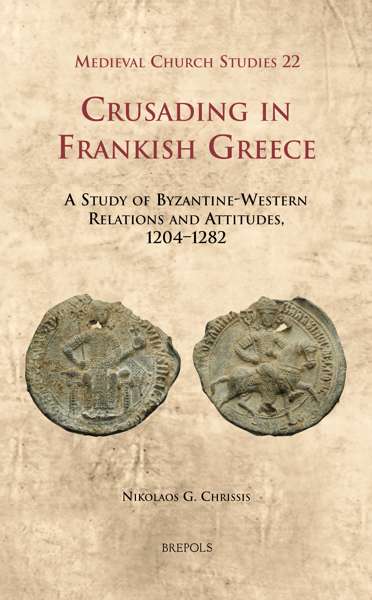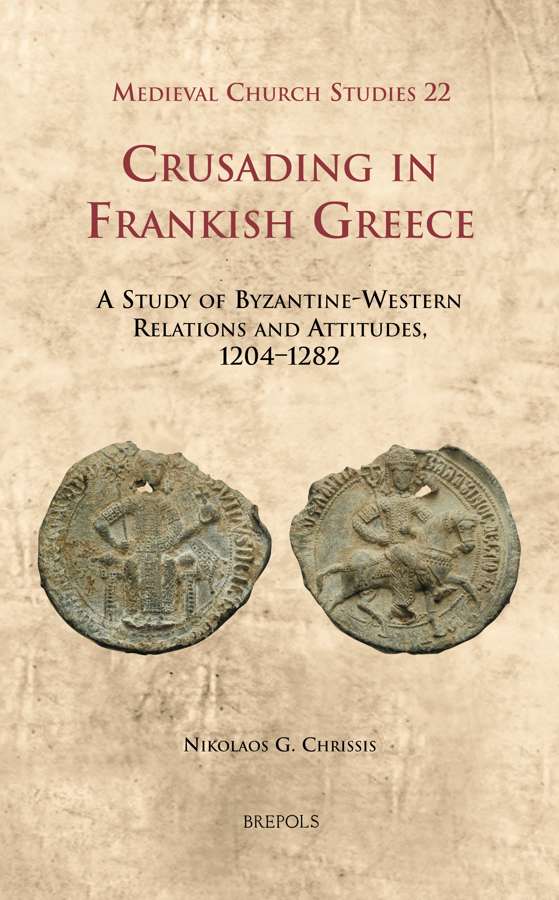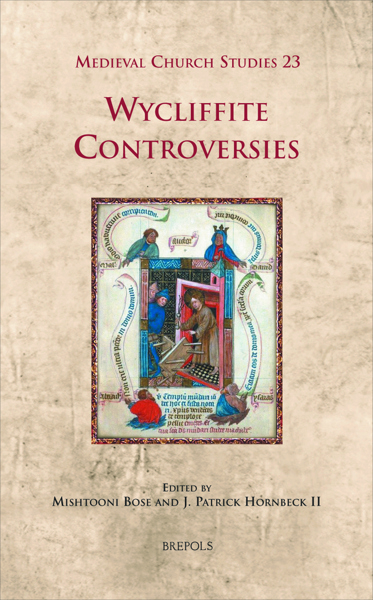
Crusading in Frankish Greece
A Study of Byzantine-Western Relations and Attitudes, 1204-1282
Nikolaos G. Chrissis
- Pages: xlii + 338 p.
- Size:156 x 234 mm
- Illustrations:1 tables b/w.
- Language(s):English, Latin
- Publication Year:2013
- € 110,00 EXCL. VAT RETAIL PRICE
- ISBN: 978-2-503-53423-7
- Hardback
- Available
- € 110,00 EXCL. VAT RETAIL PRICE
- ISBN: 978-2-503-57223-9
- E-book
- Available
"Nikolaos Chrissis has contributed carefully researched and useful scholarship that requires consideration not only from crusade historians but also from all with an interest in the thirteenth century papacy, Latin Empire, or the Byzantine successor states. (...) This is an important piece of scholarship in that it really does fill a need. Although there has been a flood of monographs on the crusades in the last decade, there is nothing really comparable to this book." (David Parnell (Indiana University, Northwest) in: The Medieval Review, 13.10.13)
"On every level, this book is a success. (...) Chrissis places generations of crusading in Frankish Greece firmly into the framework of the medieval crusading movement. It is an impressive work, long overdue." (Thomas F. Madden (Saint Louis University) in: The American Historical Review, April 2014)
"This book by Nikolaos Chrissis sets out to fill the gap left by the almost complete neglect of crusading activity in the Latin Empire of Constantinople and in Frankish Greece after 1204. In this it succeeds admirably, and it will be the reference work on this topic. It is well researched, academically rigorous, and clearly and interestingly written. The bibliography is full and the footnotes helpful to students, while the author’s conclusions will provide much meat both for seminars and scholarly reflection. (...) This is a good book and deserves a wide readership." (Peter Lock (York St. John University) in: Speculum 89/1 (January 2014))
"In conclusione, il lavoro di Ch. risponde pienamente alle attese del lettore, venendo a costituire un sussidio davvero indispensabile per ogni futura ricerca su questa tematica." (Matteo Deroma, in: Medioevo greco, 14, 2014, p. 451-453)
"L'examen des sources est très minutieusement conduit et permet de suivre les fluctuations et les évolutions des sentiments et des attitudes des différents protagonistes, les enthousiasmes et les oppositions. (...) l'ouvrage apporte une contribution importante à un domaine mal connu des relations entre Byzantins et Occidentaux." (Christiane Deluz, dans: Revue d'Histoire Ecclésiastique, 2015-1, p. 387-389)
« Ce travail bien documenté et illustré de cartes, s’appuie sur un important dépouillement de registres pontificaux, de sources littéraires et de documents d’archives édités. » (Marie Guérin, dans les Cahiers de civilisations médiévales, 60/239, 2017, p. 292)
After becoming a major aspect of the contact between East and West during the twelfth century, the Crusades were even more widely deployed in the thirteenth century at the frontiers of Latin Christendom (in the Holy Land, the Iberian peninsula, and the Baltic), as well as within western Europe. Another such front was opened up after the conquest of Constantinople by the army of the Fourth Crusade in 1204, where the opponents were the Christian but ‘schismatic’ Greeks. A series of crusades were proclaimed for the defence of the Frankish states which were set up in the formerly Byzantine territories. This development defined the policy of the papacy, of the Latin powers, and of the Greek states in the area, and had a profound impact on Greco-Latin relations in the thirteenth century. At the same time, it constituted an important stage in the expansion of crusading at large, and was an integral part of the process of Latin Christendom’s self-definition against the various ‘others’ it came in contact with: Muslims, pagans, as well as Eastern Christians. Yet, despite their importance, these expeditions have not been systematically examined before.This book addresses this omission. Drawing from both Byzantine and crusade historiography and making use of a wealth of unexploited sources, it investigates the evolution of crusading in Frankish Greece and places it in the context of Byzantine-western interaction, of political circumstances across Europe, and of developments in the theory and practice of Holy War.
Introduction
- A Historiographical Gap: The State of Research on Crusading in Frankish Greece
- Background: Crusading Aggression against Byzantium in the Twelfth Century
- Crusading in Frankish Greece in the Thirteenth Century: Overview of the Political Situation, Main Themes of the Examination, and Sources
- The Latin Conquest and the Crusade for its Defence: Imperial Initiative and Papal Response
- Factors and Motives for Innocent’s Approval of Crusading in Frankish Greece: Policy and Theory
- Papal Crusading Policy in Romania, 1205–08, and the Crusade of Bishop Nivelon of Soissons
- The Latin Empire as a ‘Crusader State’
- Church Union and Crusading in Frankish Greece
- Papal Policy and Crusading in Frankish Greece in the Latter Part of Innocent’s Pontificate
- Conclusions
- Honorius III: Crusade Policy and Priorities
- The Crusade for the Liberation of Emperor Peter of Courtenay and Cardinal Legate John Colonna
- The Montferrat Crusade for the Defence of the Kingdom of Thessalonica
- Conclusions
- Frederick II and the Election of John of Brienne: Gregory’s Early Crusade Involvement in Romania (1227–32)
- Temporary Peace and Resumption of Hostilities: Church Union Negotiations with Nicaea (1232–34) as an Alternative to Crusading in Frankish Greece
- Ut Israelem veteris: Initial Phase of the Crusade for the Latin Empire and the First Attempted Diversion of Holy Land Crusaders (December 1235–October 1236)
- Ad subveniendum imperio: Intensification of the Efforts for the Constantinopolitan Crusade and the Introduction of the Argument of Heresy (December 1236–November 1238)
- Baldwin’s Crusade (November 1238–1239/40)
- The End of Gregory’s Efforts for the Latin Empire
- Conclusions
- Continuities and Departures: Key Factors and Themes for the Period 1241–61
- Innocent’s Early Attitude to Crusading in Romania: Rhetoric and Reality
- The First Council of Lyon and its Aftermath (1245–47)
- Church Union Negotiations and Rapprochement with Nicaea: The Abandonment of Crusading Support for the Latin Empire
- The Policy of Alexander IV
- Conclusions
- 1261–82: Outline of Main Events and Factors
- The Crusade for the Restoration of the Latin Empire and the Defence of the Principality of Achaia under Urban IV (1261–64)
- The Rise of Charles of Anjou during the Pontificate of Clement IV (1265–68) and the Vacancy of the Apostolic See (1268–71)
- The Rejection of Crusading in Frankish Greece: Papal Policy under Gregory X (1271–76) and the Union of the Churches at the Second Council of Lyon (1274)
- The Fate of Church Union and the Crusade in Frankish Greece under Gregory X’s Successors (1276–80)
- A Final Reversal: The Annulment of Union under Martin IV, the Sicilian Vespers, and the End of Angevin Designs on Constantinople (1282)
- Appendix i. Maps of Romania
- Appendix ii. Table of Rulers
- Appendix iii. Main Crusade Calls for Frankish Greece in the Thirteenth Century
- Appendix iv. Preaching the Cross for Frankish Greece
Index




